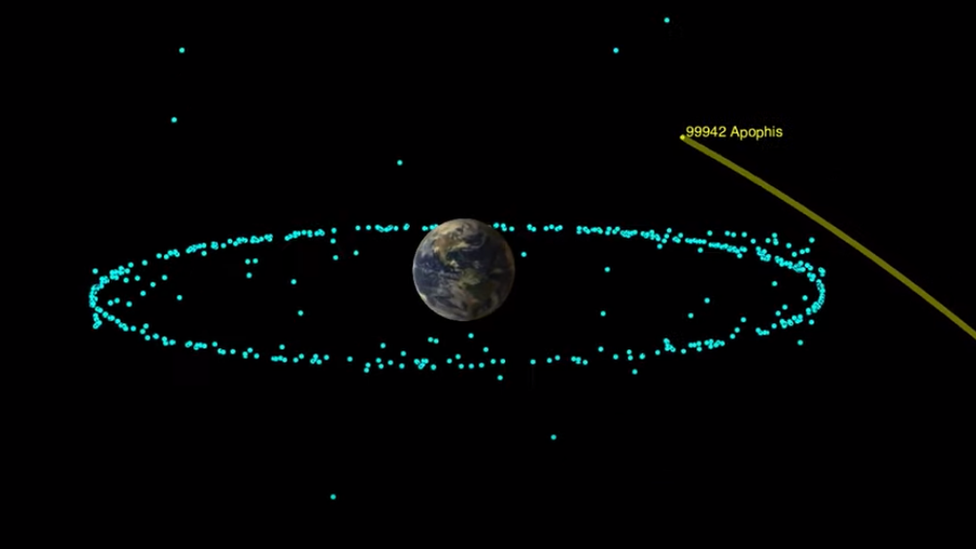Nasa craft carrying 4.5bn-year-old asteroid dust begins long trek home
- Published
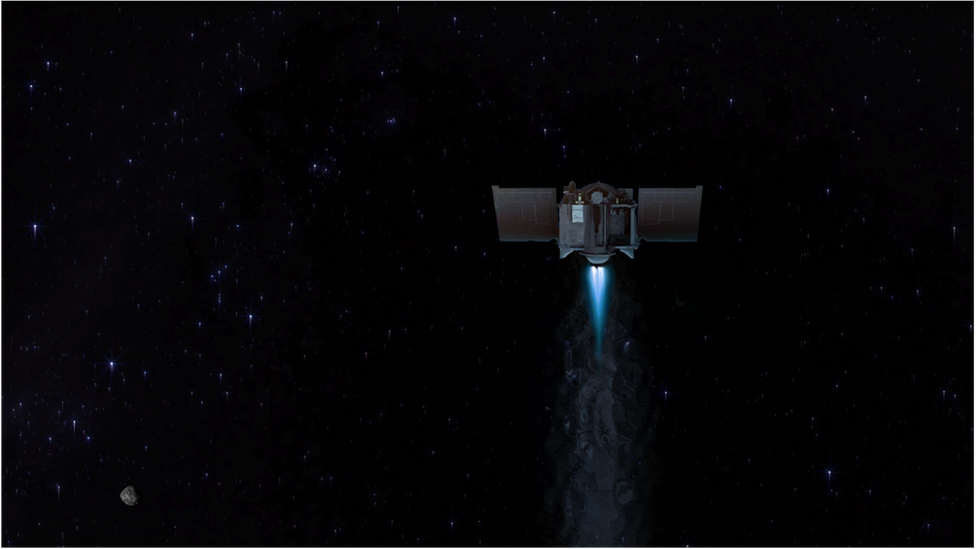
Artwork: Osiris-Rex leaving Asteroid Bennu
A time capsule containing a sample of rock and dirt as old as the Solar System will drop from outer space into the Utah desert on 24 September 2023.
That is what Nasa has planned for its historic Osiris-Rex asteroid probe, which began its trek home on Monday.
Its precious cargo of 60g of ancient debris from the near-Earth asteroid Bennu is the largest sample collected since the Apollo Moon missions.
Scientists believe it may provide clues on the formation of the Solar System.
Nasa's Osiris-Rex started its two-and-a-half-year return journey from Bennu on Monday at 16:16 EDT (21:16 GMT).
The spacecraft launched in 2016 off the Florida coastline. Its destination: the asteroid Bennu, some 185m miles (297m km) away.
The probe has been mapping the surface of Bennu since 2018, breaking the record for the closest ever orbit of a planetary body by a spacecraft.
Its historic "touch-and-go" sample grab from the ancient asteroid's surface in October 2020 lasted only a few seconds but left scientists "exuberant".
They hope the debris from this very primitive object will tell them more about the chemistry that brought the Sun and the planets into being more than 4.5bn years ago.
Bennu, first discovered in 1999, is about half a kilometre wide at its equator - only just wider than the Empire State Building's height, according to Nasa. It makes a close approach to Earth every six years.
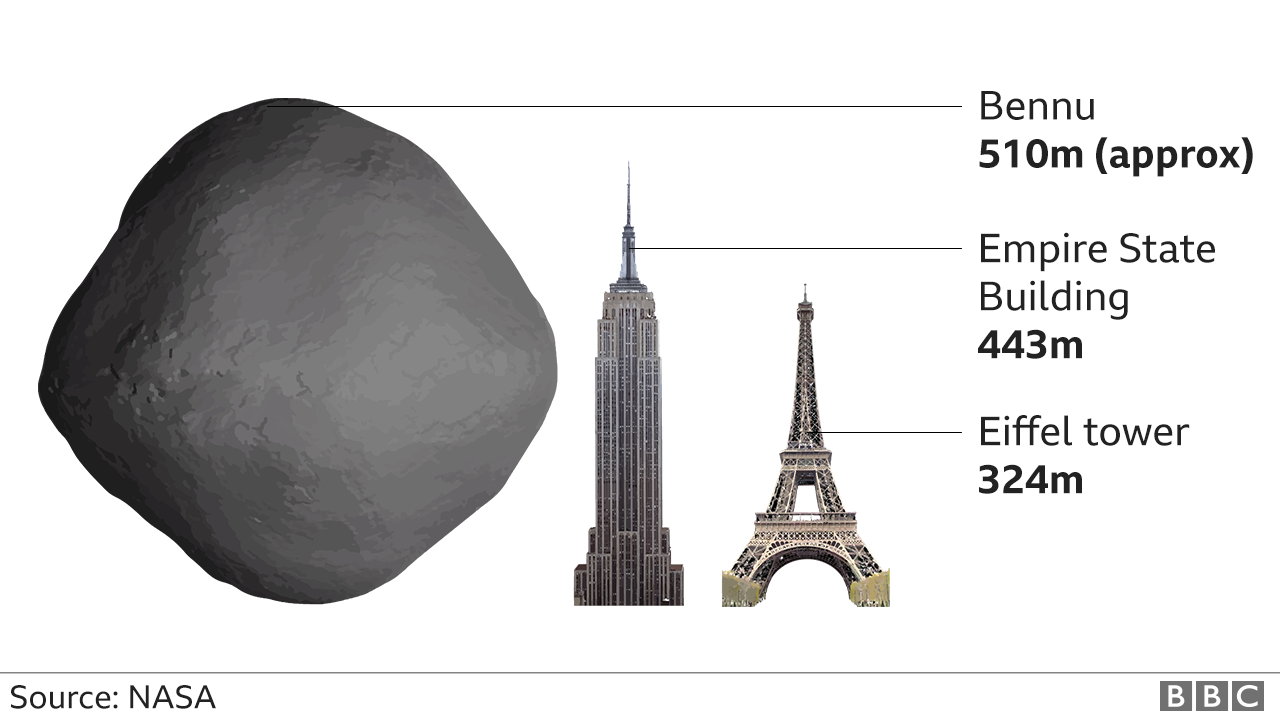
With its payload now secured, the spacecraft will circle the Sun twice so it can catch up to Earth and then deposit its debris capsule into Earth's atmosphere.
Nasa says this departure sequence will be its "most significant manoeuvre" since it arrived on the asteroid. The craft must change velocity by 595mph (958 km/h) in order to intersect Earth, and will eventually travel 1.4bn miles (2.3bn km) on its journey home.
"There is no straight path back to Earth," the space exploration agency said in a statement. "Like a quarterback throwing a long pass to where a receiver will be in the future, Osiris-Rex is travelling to where the Earth will be."
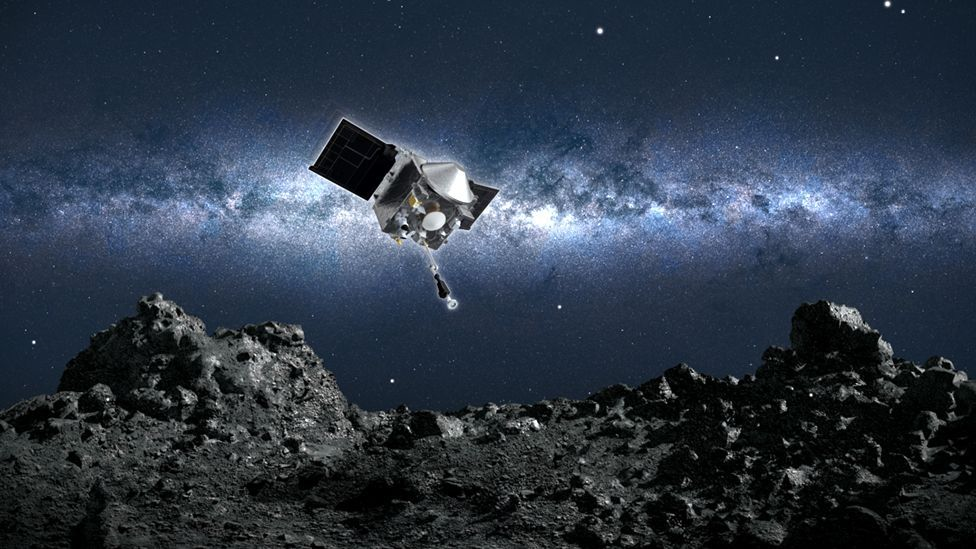
Artwork: Osiris-Rex approaching the surface of Asteroid Bennu
Once the capsule touches down, it will be taken to Nasa's Johnson Space Center facility in Houston, Texas for further study.
Nasa says it plans on keeping 75% of the samples for future generations to study "with technologies not yet created".
Controllers at Lockheed Martin celebrate the touch and go
Related topics
- Published20 October 2020
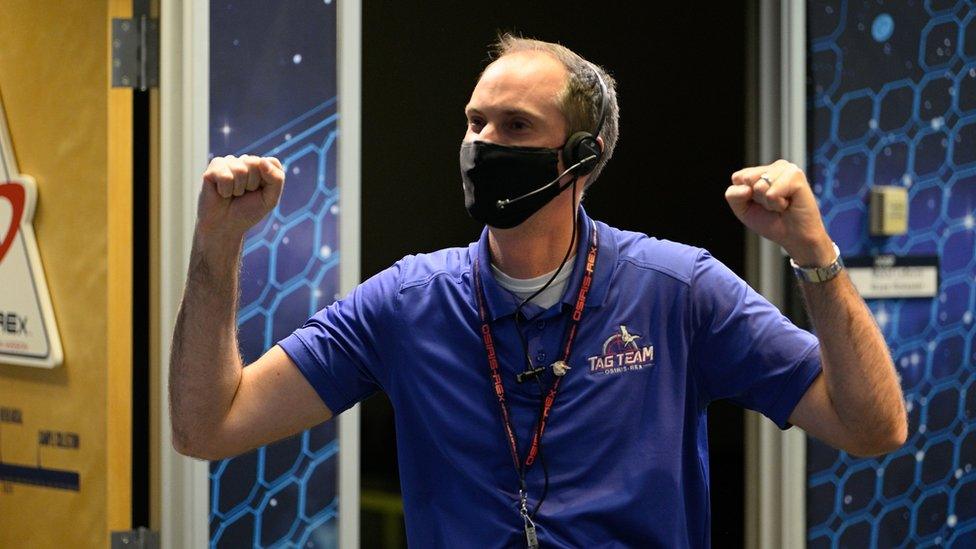
- Published5 December 2020
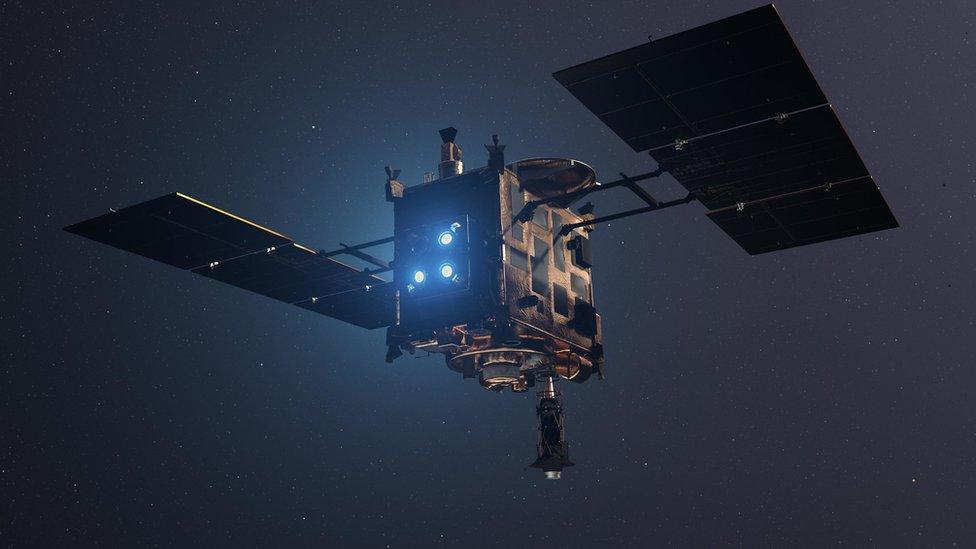
- Published27 March 2021
